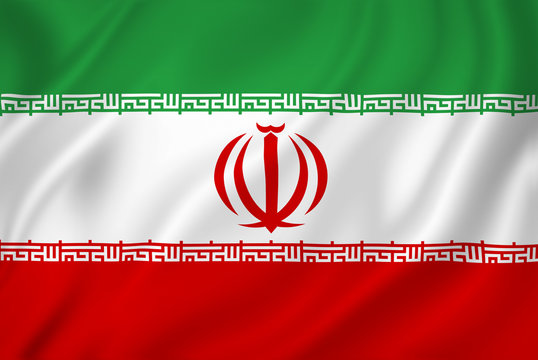Iran Flag: History, Symbolism, and Significance

1. Introduction to the Iran Flag
The flag of Iran stands as a powerful symbol of the nation’s identity, heritage, and aspirations. Featuring three horizontal stripes of green, white, and red, with a central emblem and an inscription of the Takbir, the flag reflects the deep cultural and religious significance embedded in the country’s history.
2. Historical Evolution of the Iran Flag
The journey of the Iranian flag is a testament to the country’s rich history. From the ancient banners of Persia to the dynastic flags of the Qajar and Pahlavi eras, the flag has evolved to represent the changing political landscapes and cultural shifts in Iran Flag
- Ancient Flags of Persia: Persia’s early flags were often battle standards, adorned with the emblems of royal power and divine favor.
- Qajar Dynasty Flag: This period saw the introduction of more formalized national symbols, including a lion and sun emblem.
- Pahlavi Dynasty Flag: The Pahlavi flag was marked by the imperial lion, sword, and sun, symbolizing monarchy and Zoroastrian influence.
- Post-Islamic Revolution Flag: Following the 1979 Islamic Revolution, the flag was redesigned to reflect the new Islamic Republic, with the removal of royal symbols and the introduction of Islamic motifs.
3. The Design of the Current Iran Flag
The current design of the Iran flag was adopted after the Islamic Revolution in 1979. It consists of three horizontal stripes of green, white, and red, with the national emblem centered in the white stripe and the Takbir phrase repeated 22 times along the edges of the green and red stripes.
- Description of the Iran Flag: A detailed description of each element and its placement.
- Dimensions and Proportions: Explanation of the standard dimensions and proportions of the flag.
- Color Scheme and Their Meanings: The green represents Islam, the white symbolizes peace, and the red stands for courage and martyrdom.
4. Symbolism in the Iran Flag
Each color and symbol on the Iran flag carries deep significance.
- The Green Stripe: Symbol of Islam: Green is traditionally associated with Islam, representing the country’s primary religion.
- The White Stripe: Symbol of Peace: The white stripe symbolizes peace and purity, reflecting the aspirations of the nation.
- The Red Stripe: Symbol of Courage and Martyrdom: Red signifies the blood of those who have fought for the country, symbolizing courage and sacrifice.
5. The Central Emblem
At the heart of the Iran flag is the emblem, which is a stylized representation of the word “Allah” and carries profound religious and cultural meaning.
- Description of the Central Emblem: Analyzing the design and its Islamic and Persian influences.
- Historical and Cultural Significance: The emblem as a representation of Iran’s Islamic identity.
- The Use of the Word “Allah” in the Emblem: The religious significance and how it reflects the post-revolution identity.
6. The Takbir Inscription
The phrase “Allahu Akbar” (God is great) is inscribed 22 times along the borders of the flag, representing the Islamic Revolution’s triumph on the 22nd of Bahman in the Iranian calendar.
- Explanation of the Takbir Phrase: The religious and revolutionary significance of the phrase.
- The Symbolism of the Takbir in the Flag: How it reinforces the Islamic Republic’s ideals.
- Placement and Frequency of the Inscription: Details about its placement and why it’s repeated 22 times.
7. Flag Protocol and Usage
There are specific guidelines for the proper display and handling of the Iran flag, reflecting the respect and reverence it commands.
- Proper Display and Handling of the Flag: Guidelines for everyday and special occasions.
- Protocol for National Celebrations and Mourning: Specific rules during holidays, celebrations, and periods of mourning.
- Flag Usage in Government and Public Buildings: How and where the flag is displayed across Iran.
8. Controversies and Criticism
The Iran flag has been the subject of various controversies, both domestically and internationally, particularly due to its political and religious symbolism.
- Political Interpretations of the Flag: How different groups within Iran interpret the flag.
- International Reactions and Controversies: The flag’s perception abroad and incidents involving its display.
- Controversial Changes and Proposals: Discussions about potential changes to the flag’s design.
9. Comparison with Previous Flags
The current flag marks a significant departure from its predecessors, reflecting the profound changes in Iran’s governance and ideology.
- Differences with the Pahlavi Flag: A comparison highlighting the symbolic shifts from monarchy to republic.
- Continuities from Ancient Persian Flags: Elements that have remained consistent throughout history.
- Symbolic Evolution from Monarch to Republic: How the flag’s symbolism has evolved to reflect the Islamic Republic.
10. The Iran Flag in Popular Culture
The Iran flag is a potent symbol in various aspects of popular culture, from art to sports, embodying national pride and identity.
- Representation in Art and Literature: How the flag is depicted in Iranian and global art.
- Use in Sports and International Events: The flag’s role in representing Iran in international arenas.
- The Flag as a Symbol of National Identity: How the flag is used to foster a sense of unity and pride among Iranians.
11. The Flag During the Islamic Revolution
The 1979 Islamic Revolution was a turning point in Iran’s history, and the flag played a crucial role in symbolizing the revolutionary ideals.
- Role of the Flag in the 1979 Revolution: How the flag was used as a revolutionary symbol.
- Changes in Flag Design Post-Revolution: The modifications made to align the flag with the new Islamic Republic.
- The Flag as a Revolutionary Symbol: The significance of the flag in the context of the revolution.
12. Iran’s Flag in International Relations
The Iran flag is not just a national symbol but also a key element in international diplomacy.
- The Flag in Diplomatic Contexts: How the flag is used in diplomatic ceremonies and agreements.
- Perception of the Iran Flag Abroad: International views and reactions to the Iran flag.
- Flag as a Symbol of Iran’s Global Identity: The role of the flag in shaping Iran’s image on the world stage.
13. Iran’s Flag in Media and Protests
The Iran flag often appears in media coverage and protests, symbolizing a wide range of political and social messages.
- Use of the Flag in Protests and Demonstrations: How the flag is used in both pro-government and opposition protests.
- Media Representation of the Flag: How the flag is portrayed in global media.
- The Flag in Global Protests Related to Iran: Instances of the Iran flag in international protests.
14. Variations and Misrepresentations
Various versions and misrepresentations of the Iran flag exist, particularly among the Iranian diaspora and in international contexts.
- Common Misrepresentations of the Flag: Examples of incorrect or altered versions of the flag.
- Flag Variations Used by Iranian Diaspora: Differences in flag usage among Iranians abroad.
- Incorrect Usages in International Media: How the flag is sometimes wrongly depicted.
15. Conclusion
The Iran flag is more than just a national symbol; it embodies the country’s complex history, its religious and cultural identity, and its place in the world.
- Recap of the Flag’s Symbolism and Importance: Summarizing the key elements that make the Iran flag significant.
- The Role of the Flag in Modern Iran: How the flag continues to serve as a unifying symbol.
- The Future of the Iran Flag in National Identity: Speculating on the flag’s role in the future of Iran’s national identity.
- Iran Flag




